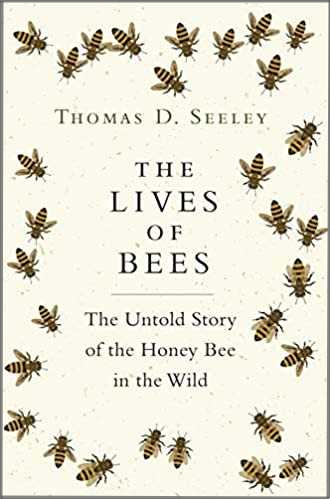Protecting A Hive With Bee-Friendly Bee Hive Paint
Beekeepers have a number of reasons for painting their beehives. This can raise, a number of questions, such as 'which paint is safe for bees?' and 'what are the alternatives to standard paint products?'
Should You Paint Your Beehives?
There are a number of reasons to paint your beehives, but the most important is to protect the outside of the hive against the elements: sun, rain, snow. A stronger, sturdier hive is surely also better for the bees, because it will help to keep the inside of the hive dry and cold thanks to cracks and splits in wood.
Protecting the hive without using paint
In his book, The Barefoot Beekeeper, Phil Chandler provides an inexpensive, bee-safe formula for painting hives:
"The outer surface of the hive can be coated with a 1:20 mixture of beeswax and linseed oil, melted together, well stirred in a double boiler and applied while still hot.
This coating is harmless to bees and will keep the weather out most effectively without recourse to potentially toxic chemicals."
- The Barefoot Beekeeper, Phil Chandler
He then quips:
"If it contains some propolis as well. then so much the better - after all, Stradivarius used it to varnish his violins."
He expands on the recipe and technique further in his top bar bee hive plans.
"To 1 litre linseed oil (raw for preference) add 50 ml melted beeswax (use 1:20 ratio with whatever units suit you). Heat in a double boiler (bain marie; or one saucepan inside another – the larger one containing a couple of inches of water).
Get it as hot as boiling water will allow and stir for 10 minutes. Allow to cool and while still on the hot side of warm, paint it on the outside of your hive, paying special attention to end grain, nail heads (underneath) and joints.
There is no need to coat the inside of the hive: the bees will do that for themselves with propolis."

Other philosophies on hive painting
Beekeepers may paint their hives for reasons other than to protect the bees. Such reasons may include, for example:
- painting bee hives white to help deflect strong sun rays in very hot climates.
- personal preference, to add decoration and make the hive into a 'feature'.
- to enable the hive to blend in to the background (in contrast to making the hive into a stand out features, as mentioned above).
- to introduce a color code system.
In view of the above, some beekeepers may prefer to use actual paint.
Which beehive paint?
If you are keen to use paint, then pay attention to your choice, and read the contents label carefully. Selecting a random paint from the bargain store could end up being a false economy that is bad for the health of your bees.
Initially, look for an Eco-paint label, but read the label nevertheless.
Select a water-based paint that is low in volatile organic compounds (even better, select zero-VOC if you can get it), and give the remaining compounds time to evaporate off after paining, before installing the honey bees. Depending on instructions on the label, you may have to wait days or even weeks, and this may affect your timings for purchasing and introducing bees.
Do not paint the inside of the hive.
If you found this page helpful or interesting, I'd really be grateful if you would share it with others - if not this page, perhaps another, such as Gardening For Bees.
Thank you so much :) .
